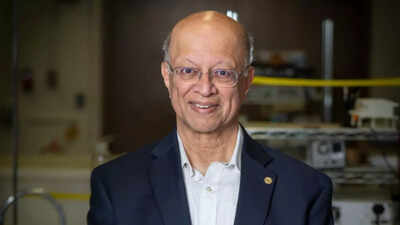ARTICLE AD BOX

Ashok Gadgil was born in 1950 in Mumbai, India, a city bustling with energy and contrasts. Even as a child, he was captivated by the mechanics of the world—why things worked the way they did and how science could solve everyday problems.
This curiosity shaped his academic path, leading him to earn a physics degree from the University of Mumbai. Gadgil’s early exposure to real-world challenges inspired him to think about science not just as a theoretical pursuit, but as a tool for meaningful change.
IIT Kanpur and Berkeley: Forging the scientist
Eager to deepen his understanding of physics, Gadgil pursued an M.Sc. at the Indian Institute of Technology, Kanpur, one of India’s premier technical institutions.
He then crossed continents to the University of California, Berkeley, earning both an M.Sc. and a Ph.D. in physics. While Berkeley offered him the freedom to explore advanced scientific questions, Gadgil’s ambition extended beyond academic accolades—he envisioned applying scientific principles to solve pressing human problems, particularly in developing countries.
Hands-on development work in India
After completing his Ph.D., Gadgil returned to India for five years to work with a nonprofit organisation.
This experience immersed him in the realities of communities struggling with unsafe water, energy shortages, and sanitation challenges. He realised that scientific knowledge alone was insufficient—solutions had to be affordable, practical, and scalable to truly make a difference. These formative years shaped his lifelong commitment to development-focused engineering.
Bridging research and real-world impact
Back at Berkeley, Gadgil became a distinguished professor of civil and environmental engineering, teaching graduate courses such as “Design for Sustainable Communities” and “Technology and Sustainability.”
At the Lawrence Berkeley National Laboratory, he led research on energy efficiency, indoor air quality, and sustainable technologies, exploring ways to make homes safer, reduce energy use, and protect communities from environmental hazards.
As director of the Environmental Energy Technologies Division and faculty director of the Development Impact Lab, he mentored students to tackle large-scale societal problems with practical, innovative solutions.
Life-changing innovations
Gadgil’s most celebrated contributions are technologies that directly improve lives:
- UV Waterworks: A low-cost ultraviolet water purification system providing safe drinking water to millions in India and Africa.
- Darfur Stoves Project: Fuel-efficient stoves designed with displaced women in Sudan, reducing firewood use, greenhouse gas emissions, and the risk of violence during fuel collection.
- ECAR (ElectroChemical Arsenic Removal): A simple, low-voltage system that removes arsenic from drinking water, delivering safe water at minimal cost to affected communities in West Bengal.
Recognition and global impact
Gadgil’s work has earned worldwide recognition, including election to the U.S. National Academy of Engineering in 2013. He has authored over 213 research papers, cited more than 3,800 times, and continues to push the boundaries of development engineering. His career is a testament to the power of combining scientific rigor with empathy, turning cutting-edge physics into practical solutions that improve millions of lives.
A legacy of science and service
From Mumbai classrooms to Berkeley laboratories, from equations on a blackboard to stoves and water systems in villages, Ashok Gadgil exemplifies how education, innovation, and social commitment can intersect. His journey shows that science, when applied thoughtfully, can become a tool for global transformation, improving lives and creating sustainable solutions for generations to come.



.png)
.png)
.png)
















 6 hours ago
5
6 hours ago
5







 English (US) ·
English (US) ·